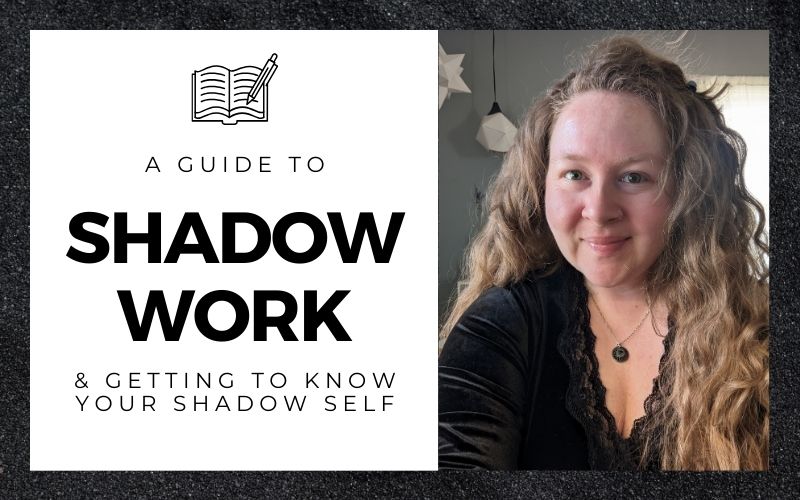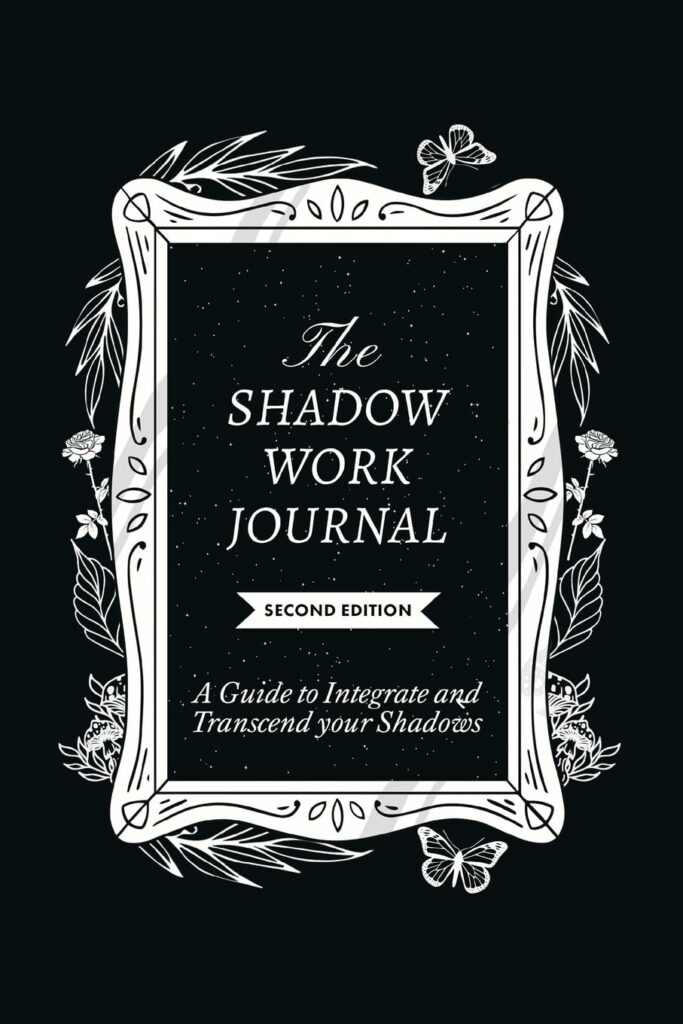Have you ever felt a flicker of anger for no reason, or been inexplicably jealous of someone else’s success? Imagine these experiences as whispers from a hidden chamber within your psyche, a wealth of emotions, desires, and impulses you’ve tucked away for years. This realm, known as the shadow self, is a potent force that shapes our behavior and relationships in profound ways. What if there was a way to explore this unseen territory?
Enter shadow work, a powerful practice rooted in Jungian psychology that invites us to bring hidden aspects of ourselves into the light, leading to profound personal transformation. Let’s dive into the world of shadow work and discover how it can help us unlock a more complete and authentic version of ourselves.
What is Shadow Work?
Shadow work is a form of introspective practice aimed at acknowledging and accepting the hidden aspects of our psyche that we tend to suppress or deny. It involves delving into our subconscious to uncover buried emotions, fears, and traumas. Through techniques like meditation, journaling, and therapy, shadow work allows individuals to bring these unconscious elements into the light, leading to greater self-awareness and personal growth.
Jump To:
The Theory Behind Shadow Work: Jungian Philosophy
Psychoanalyst Carl Jung, first introduced the concept of the “shadow self.” Jung used this term to describe things people repress or don’t like to acknowledge. He theorized that it is a counterweight to the persona, which is the self that people present to others. (Safai, 2023)
Jung also believed that facing these “shadow aspects” was crucial for achieving wholeness. When we deny these parts, they fester and manifest in negative ways, like projecting our insecurities onto others or self-sabotaging behaviors.
In addition to being an introspective practice, shadow work is a type of psychotherapy that focuses on the parts of the psyche that people often keep hidden, such as trauma and resentment. Some people refer to these aspects of themselves as the “shadow self”. (Safai, 2023)
In shadow work, we embark on a transformative journey of self-discovery and healing by confronting hidden aspects of ourselves, often obscured by darkness but ripe with potential for growth. It’s a courageous exploration of our inner landscape, where we acknowledge and integrate long-dwelling shadows, not just fears or traumas.
Through practical techniques and the stories we tell ourselves, we navigate the path towards self-awareness and empowerment, where once-feared shadows become keys to unlocking true potential.
Shadow work empowers us to acknowledge these repressed emotions, desires, and negative tendencies, understand their origins, and ultimately integrate them into our conscious selves.
Remember: the shadow isn’t evil. It encompasses a spectrum of repressed emotions and disowned parts of ourselves. We tend to push down anger, jealousy, sadness, along with talents and desires we deem unacceptable, fearing judgment or shame. Yet, the shadow remains, often exerting a subtle but persistent influence on our lives.
Is shadow work the same as inner child work?
No. Shadow work and inner child work are similar but not exactly the same. Imagine the shadow self as an attic filled with boxes (much like your brain or personality). Some boxes hold repressed emotions and negative tendencies, while others hold talents and desires we pushed down. Inner child work focuses on only the specific set of boxes from your childhood containing unhealed wounds and limiting beliefs. Shadow work is about exploring the entire attic, cobwebs, spiders, bats, and all, to help you understand what’s in each box, and integrate the contents into a more organized and functional space.
Shadow Work:
- Focuses on unconscious aspects of ourselves, including repressed emotions, desires, and negative tendencies.
- Deals with a wider range of hidden aspects, not just childhood experiences.
- Aims to integrate these hidden parts into our whole personality for a more complete sense of self.
Inner Child Work:
- Focuses on healing past emotional wounds from childhood experiences.
- Deals specifically with unmet needs, limiting beliefs, and emotional pain from our younger years.
- Aims to heal these wounds and develop healthier emotional patterns in the present.
How Shadow Work & Inner Child Work Are The Same:
- Both practices dive into deeper aspects of ourselves.
- Both can involve exploring repressed emotions.
- Inner child work can be a part of shadow work, as the shadow self often contains unhealed aspects from childhood.
- By healing the inner child, we can integrate these parts of the shadow and move forward.

Why Shadow Work is Important
The benefits of shadow work are immense! By acknowledging and integrating our shadow, we cultivate greater self-acceptance and emotional resilience. We become less reactive and take ownership of our projections and anxieties. There are many stories of individuals who, through shadow work, broke free from limiting beliefs, healed from past traumas, and tapped into hidden strengths.
- Self-Acceptance: By acknowledging and integrating your shadow, you will cultivate greater self-acceptance and compassion. You become less judgmental of yourself and others.
- Emotional Resilience: Shadow work helps you understand the root of your emotional triggers, allowing you to respond in a more balanced and healthy way.
- Healing: Shadow work can help heal from past traumas by bringing repressed emotions to light and processing them in a safe space.
Why Shadow Work is Hard:
Shadow work isn’t always a comfortable experience. You may confront deeply ingrained patterns or suppressed emotions that bring discomfort. It’s important to manage your expectations. Shadow work is a journey, not a destination. It requires commitment and a willingness to confront uncomfortable truths. Remember, there’s no shame in seeking professional guidance to navigate your shadow work journey.
Reasons to Use Shadow Work
Shadow work can address a wide range of issues:
- Inner Child Healing: By confronting your shadow self as your “shadow child” self, you can start to heal from unmet needs and limiting beliefs formed in your early years.
- Anger Management: Unearthing the root cause of your anger in the shadow can help you express anger healthily instead of letting it control you.
- Childhood Trauma: Shadow work can help you process and heal from past traumas that may be impacting your current life.
- Relationship Healing: By understanding your shadow projections, you can improve communication and intimacy in your relationships.
- Overall Healing: Shadow work promotes emotional and psychological healing by bringing hidden aspects of yourself into the light.
- Jealousy: Exploring jealousy through shadow work can help you understand its underlying insecurities and develop healthier coping mechanisms.
- Love: By integrating your shadow, you become a more complete and authentic person, capable of giving and receiving love more fully.
- Insecurity: Examining the roots of insecurity can help you build self-confidence and develop a more positive self-image.
- Anxious Attachment: Shadow work can help you identify patterns of anxious attachment and develop secure attachment styles.
What are the challenges & obstacles in shadow work?
Shadow work is most certainly rewarding, but it isn’t always easy. The very nature of the process, confronting hidden aspects of ourselves, can trigger resistance. This resistance can manifest in various ways:
- Procrastination: You might find yourself putting off shadow work exercises, or conveniently “forgetting” to journal or analyze your dreams.
- Rationalization: The voice in your head might whisper, “Why bother? I’m fine the way I am,” or downplay the impact of your shadow self on your life.
- Self-Criticism: The process of uncovering negative traits or past wounds can trigger a harsh inner critic, leading to feelings of shame or inadequacy.
How to confront shadow work obstacles
Unearthing the shadow inevitably stirs up uncomfortable emotions. Anger, sadness, shame, and jealousy may bubble to the surface when you confront repressed feelings and past wounds. These emotions are a natural part of the process. However, they can also be a major hurdle, tempting us to abandon the process altogether.
Remember, these challenges are normal. They signal that your shadow work is actually working! Here are some tips for navigating these obstacles:
- Acknowledge your resistance: Don’t beat yourself up for procrastinating or feeling hesitant. Instead, acknowledge these feelings and gently nudge yourself back towards the work.
- Practice Self-Compassion: Be gentle with yourself. Shadow work is a challenging journey, and it’s okay to feel overwhelmed at times.
- Focus on Progress, Not Perfection: Shadow work is a marathon, not a sprint. Celebrate small victories and remember that even taking a step towards facing your shadow is progress.
- Allow Yourself to Feel: Don’t suppress the emotions that arise during shadow work. Acknowledge them, explore their roots, and allow them to move through you in a healthy way.
- Seek support: Shadow work doesn’t have to be a solo journey. Consider working with a therapist or joining a shadow work group for guidance and support.
- Develop coping mechanisms: Learn healthy ways to manage uncomfortable emotions that arise during shadow work. Techniques like journaling, meditation, or spending time in nature can be helpful.
Don’t forget, the discomfort you experience is temporary. Embrace the challenges as an integral part of the growth process. By facing the darkness from inside, you pave the way for greater self-awareness, emotional resilience, and ultimately, a more authentic and whole version of yourself.
How to Find Your Shadow Self
When we dive deeper into the concept of shadow work, we discover a profound journey of self-discovery and transformation. Imagine peeling back the layers of your psyche to reveal the hidden aspects of yourself—those parts often shrouded in darkness yet holding immense potential for growth and healing.

Shadow work is not merely about confronting our fears or past traumas; it’s a courageous exploration of our inner landscape, where we confront the shadows that have long dwelled within us, waiting to be acknowledged and integrated. In the posts to come, we’ll explore practical techniques and expert insights to guide you on this transformative path towards self-awareness and empowerment, subscribe here. Get ready to embark on a journey of self-exploration like no other, where the shadows you once feared become the keys to unlocking your true potential
The first step to shadow work is self-awareness. Pay attention to your triggers – situations or people that consistently evoke strong negative emotions. These reactions often point to shadow material. Journaling is a powerful tool here. See below for examples.
Archetypes in Shadow Work
A quick note on Archetypes in Shadow work. Archetypes are universal symbols and patterns found across cultures, mythologies, stories, movies, books, and even tarot! In Shadow work specifically we explore how these archetypes manifest from within your shadow self. For example, the “shadow warrior” archetype might represent repressed anger, while the “shadow child” could symbolize unmet needs from your past (similar to the inner child). Identifying these archetypes can offer valuable clues about your shadow’s motivations. Subscribe for more insights into archetypes.
Easy Shadow Work Exercises for Beginners
Shadow work can feel daunting, but the good news is you can begin with simple exercises. And it’s surprisingly easy to get started! Here are some beginner-friendly exercises to help you explore the hidden aspects of yourself:
Pay Attention to Your Triggers: Notice situations or people that consistently trigger strong negative emotions. These reactions might be clues to your shadow self. Ask yourself: “What am I afraid of in this situation?” or “What qualities do I dislike in this person that I might also have?”
Catch Yourself Projecting: We all project sometimes! When you find yourself judging someone harshly, consider if you might be disowning a similar trait in yourself.
Explore Your Dreams: Dreams can be seen as a window into your subconscious mind. It might be helpful to start writing down what you frequently dream about and how those dreams make you feel. Exploring common dream symbols can also provide insights into how they connect to your daily experiences.

Dream symbols often have significant meaning to specific cultures, families, or individuals, ex: teeth falling out in your dream isn’t always a bad sign, it can signify growth for some people. Keep in mind that dreams often reflect our innermost thoughts, feelings, and shadow self. Consider keeping a dream journal to track patterns, emotions, and recurring dreams for further reflection, here’s how.
Journal Your Way to Insights: Journaling is a powerful tool for shadow work. Here are some prompts to spark your exploration:
“What qualities do I dislike in others but might possess myself?”
“What situations make me feel insecure?”
“What recurring dreams or nightmares do I have? What emotions do they evoke?”
“Imagine meeting a younger version of myself. What would I tell them or how would I reassure them or reparent them?”
>>> New to journaling? Check out my tried & true favorite tools & supplies here. <<<
Active Imagination: This Jungian technique involves creating dialogues or scenarios with your shadow self or unconscious (Jeffrey 2024). Imagine your anger or jealousy as a person and have a conversation with them. This can help you understand their motives and desires.
Therapy & Support: Shadow work can be done independently, however a therapist trained in Jungian psychology or inner child work can be a great resource in your journey. Support groups and online communities focused on shadow work can also provide a safe space to share your experiences.
Remember, there’s no right or wrong way to approach shadow work. Choose exercises that resonate with you and be patient with yourself. The journey of self-discovery through shadow work is a gradual process, with every step forward bringing you closer to a more integrated and authentic version of yourself.
Shadow Work Resources For Beginners
Numerous resources can support your shadow work endeavors. Books like “Inner Work” by Robert A. Johnson and “The Shadow Work Journal 2nd Edition: a Guide to Integrate and Transcend Your Shadows: The Essential Guidebook for Shadow Work” by Keila Shaheen offer insightful explorations of the shadow.

Articles and online workshops can also provide valuable guidance (see more below). Journaling prompts specifically designed for shadow work are readily available here and here, and meditation practices focusing on self-compassion can create a safe space for introspection.
Integrating Shadow Work into Your Daily Life
Shadow work doesn’t need to be a separate activity. It can be woven into your daily routine. Pay attention to your emotional triggers throughout the day. Pause and ask yourself: “What shadow aspect might be at play here?” Practice self-compassion when you stumble. The shadow work journey is an ongoing exploration, not a one-time fix.
By embarking on shadow work, you open a door to a deeper understanding of yourself. You will be able to cultivate self-acceptance, emotional resilience, and a newfound sense of wholeness. It’s a courageous act of self-discovery, and the rewards are immense. Approach your shadow work journey with openness and compassion, and remember, the greatest transformation often lies on the other side of your hidden truths.
Have you explored shadow work?
For those interested in learning more, here are some resources to get you started:
- What is shadow work? What to know, Yalda Safai, MD, MPH.
- A Practical Guide to Active Imagination: How to Work with Archetypes, Scott Jeffrey.
- Shadow Work Journal Prompts To Deal w/ Negative Toxic People, Jenny Proczko
- How To Discover Your Shadow Self Journal Prompt, Jenny Proczko
- Shadow Work: A 3-Part Guide for Integrating Your Dark Side, Scott Jeffrey.
- The Essential Guide to Shadow Work, Conni Biesalski.
- Shadow work: The complete guide to knowing your true self, Lachlan Brown.
- Shadow Self: What Is It & How To Embrace It, From Experts, Sarah Regan.
- Tarot for Shadow Work, Leah Vanderveldt.
- What is Shadow Writing? Complete Guide Plus 35+ Prompts, Fija Callaghan.
- What Are the Jungian Archetypes?, Kendra Cherry, MSEd.
- Carl Jung’s Archetypes, Structural Learning.










